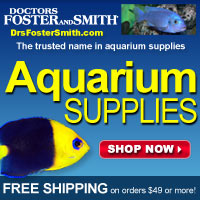Why The Nitrogen Cycle Is Important To Your Goldfish
Goldfish aquariums are considered relatively closed ecosystems. Although you can modify the tank and the water as you need, left to its own, your aquarium will be forced to sustain itself. The problem that most goldfish keepers have with this is that most often, an aquarium left by itself will not sustain fish life. One reason for this is because of an imbalance of ammonia, nitrites and nitrates.
Establishing A Bacteria Population In Your Tank
While nitrates can be harmful to your fish in high concentrations, elevated ammonia levels in your water can cause health problems for your goldfish quite quickly. Luckily, most aquariums are full of healthy bacteria that live off of the ammonia produced from goldfish waste and decaying food. These bacteria are able to convert the ammonia in the water into nitrates which are generally considered safer and more manageable.
When you first populate your tank, it will not have nearly enough helpful bacteria to be able to remove all of the ammonia that a tank full of fish will produce. For this reason, it is important to allow for a nitrogen cycle in order to slowly build up your bacteria population.
There are three main stages of the nitrogen cycle:
- In the first stage, prior to adding any fish, you will add ammonia to the tank’s water and let the filter run. This will act as a food source for the bacteria naturally present in the aquarium. Most of the bacteria will reside in the filter.
- Next, these bacteria will consume the added ammonia and convert it into nitrites. While doing this, the population will grow and be capable of processing a greater amount of ammonia.
- Lastly, another strain of beneficial bacteria will convert the nitrites into nitrates, a compound which is safe in moderation for your goldfish
Approximately four to six weeks after beginning to cycle your tank, you should find that the levels of bacteria in your tank are high enough that you can slow begin introducing your fish. Be careful not to add too many at first, or else even the established bacteria may not be able to convert all of the produced ammonia.
How To Help Your Tank’s Bacteria Population Grow
One of the most effective ways to help increase the population of helpful bacteria in your aquarium is through the use of a specialized bio filtration system. The filters in these systems contain a porous surface with plenty of places for bacteria colonies to establish themselves and grow. As your filtration system is designed to take in dirty water from your tank, process it through the filter and then move the cleaned water back into the tank, ammonia-saturated water is constantly being move over the bacteria for conversion. Please read here for our recommended filtration system.
While establishing a healthy bacteria population is important to the long-term health of your tank, it will likely not allow it to function without any effort on your part. Growing an aquarium into a fully sustaining ecosystem can take years of strategic planning and cultivation. While nitrates are not harmful in small doses, they can build up over time. After completing a nitrogen cycle, it is crucial to perform a 75%+ water change in order to reduce the water’s elevated nitrate level. As your tank matures, be sure to pay attention to the nitrate levels as well as your ammonia levels, and perform additional water changes as needed.






